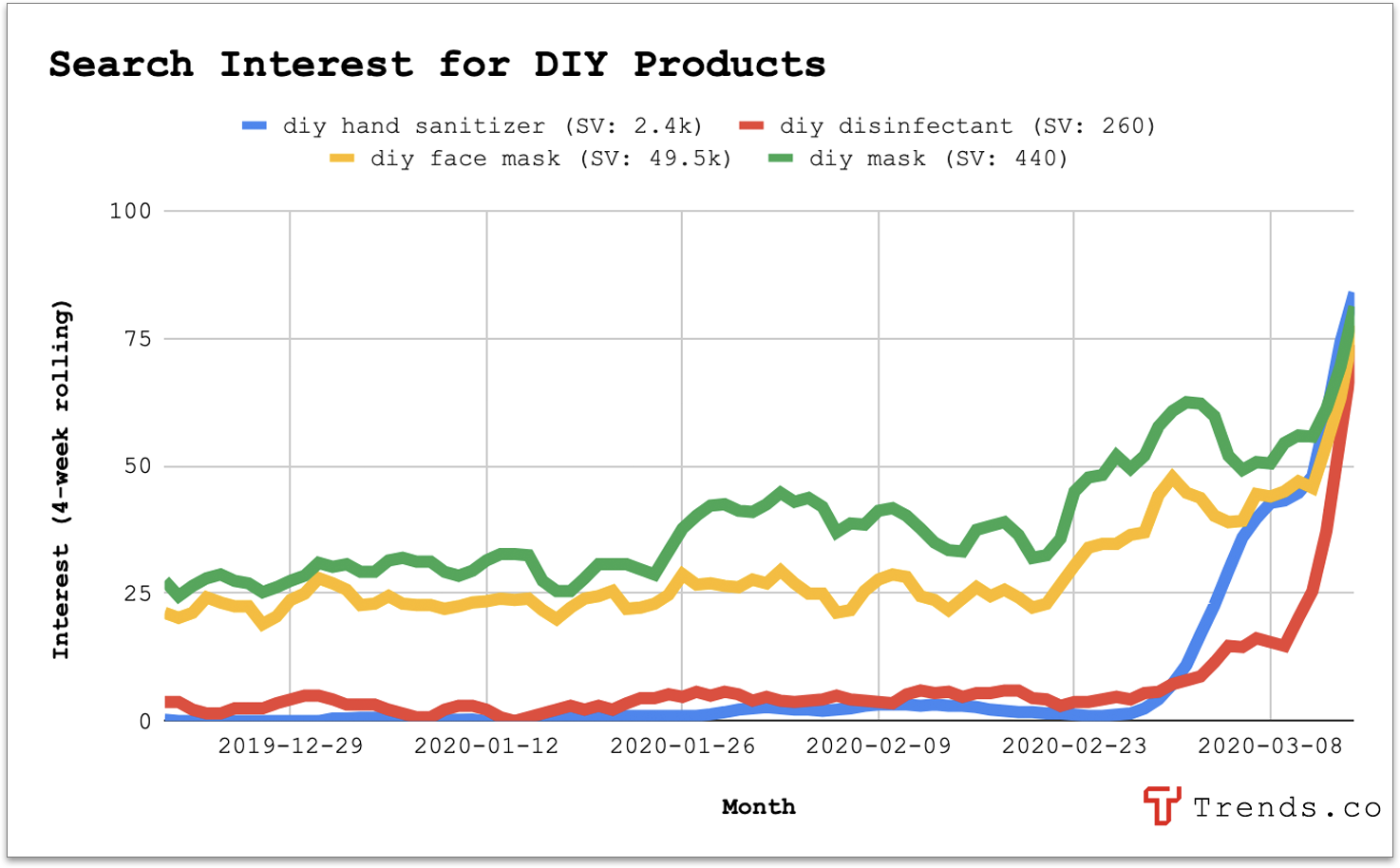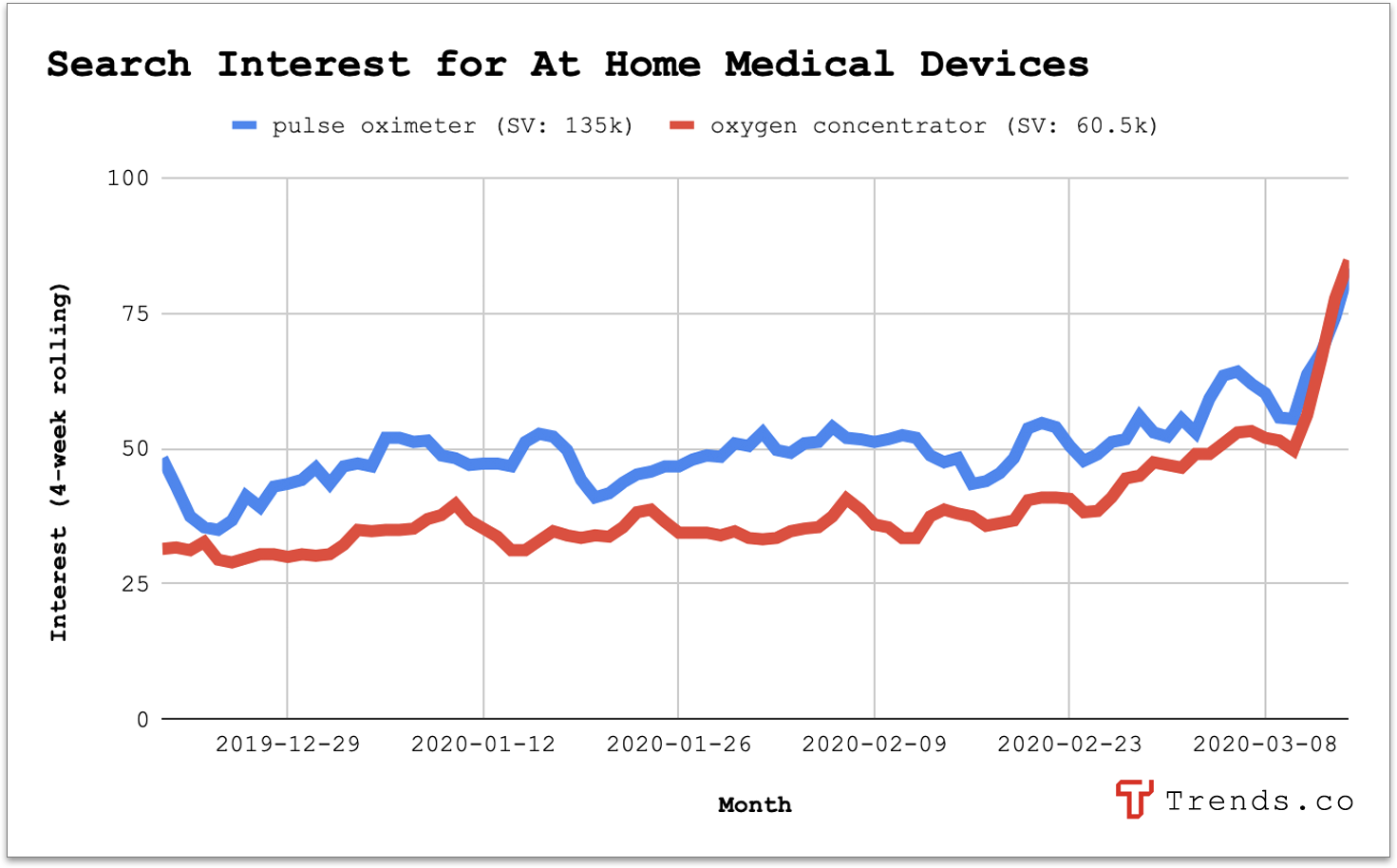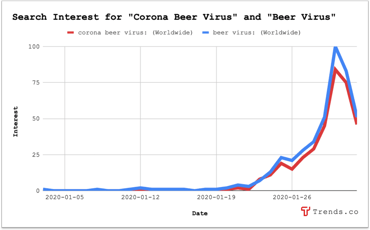nlopchantamang.com
What Happens When the Supply Chain Stops Supplying? You DIY.
Aja Frost @ajavuu

<em>Source: Google Trends</em>
The signal: COVID-19 has thrown markets into turmoil, upended the travel and cruise industries, and flipped the supply chain on its head. When this happens, it’s hard to know where to look.
As products in need become scarce (re: hand sanitizer being sold at 100x markups), people must look in the mirror to come up with new solutions. And if there’s anything humans have proved time and time again, it is our ability to surprise ourselves with our scrappiness (i.e., China built a hospital in a week).
DIY Hand Sanitizer
The simplest case of people "getting their hands dirty" (pun intended) is DIY hand sanitizer. Apparently, sanitizer is just a mix of two simple products: isopropyl alcohol (99% rubbing alcohol) and aloe vera. Who knew?

As the glorious goop runs out at the supermarket, people are ordering the raw materials to make it themselves. The same is true for people looking to make their own masks, while they don’t have the option to wait for the supply chain to open up.
[In good news, the world’s largest mask manufacturing plant has opened its doors to creating 5m masks and 300k bottles of disinfectant daily. In a second wind of good news, a new-age disinfectant brand that is supposed to reduce human error just raised a $6m Series A.]
The opportunity: As supply chains break down everywhere, there’s opportunity to break things down to their bare bones and to #reinventthechain. Some examples…
People are searching for their own at-home devices, like pulse oximeters and oxygen concentrators.

In Italy, they have started 3D-printing respirator values, which took 3h to prototype and €1 to produce. Are they perfect? No. Are they better than nothing? Yes.
In Italy, LVMH is converting cosmetic facilities into disinfectant gel factories, while in the UK, Boris Johnson is asking for ventilators to be made "from scratch". This GitHub repository trended on Hacker News, showcasing a low-cost arduino-based ventilator. In the top comment, hyperion2010 points out a very simple, yet powerful point: "How many fully stocked ICU beds can you make for 18 million dollars? There's your startup idea for the next 2 weeks."
People are ditching complicated and strangely opaque supply chains for whatever they can get their hands on. Across the world, many others are looking to make the ultimate contribution: finding a cure.
Even the standard approaches for testing, vaccines, and drug trials have been ‘laxed in order to fight one of the largest threats facing humankind. The White House has asked tech giants to use their AI capabilities to help track the spread of the virus and stop the flow of misinformation about it, while other events like COVID hackathons are looking to support new ideas for combating the disease. Meanwhile, The FDA has already given emergency approval to Swiss company Roche, which can give results in 10x the speed. Other companies, like DiaSorin Molecular and Qiagen, are getting funding from the US Department of Health and Human Services for diagnostic tests.
Request for product: A site and/or newsletter that tracks the developments of what is happening from a medical standpoint. Most of what’s out there that is tracking the spread of the virus, the fear, the legislative action, and just about everything outside of the medical advancements that are/aren’t happening and making sense of it.
If/when the world is able to recover from this pandemic, there inevitably lies more opportunity. Very few countries have had the luxury of knowing what life is like mostly post-COVID. Even those that have the virus under control are worried about subsequent outbreaks in their populations. So that begs the question that may house the most opportunity: What does life look like after COVID... both in the short- and long-term?
In the short-term, how will entire societies acclimatize? Will people go back to the movies and concerts, or will those look entirely different? Will people shake hands again, or will elbow bumps become the new norm? Will there be an even further downturn in meat consumption, given the zoonotic nature of most flu-like viruses?
No one knows for sure, but there are some trends that people already see on the horizon: contactless everything (if we weren’t there already), voice technology, and a dynamic supply chain. In thinking through that future, you can get ahead of the pack that’s still thinking about what is possible today by identifying what will build up our society of tomorrow.

Leave a Comment